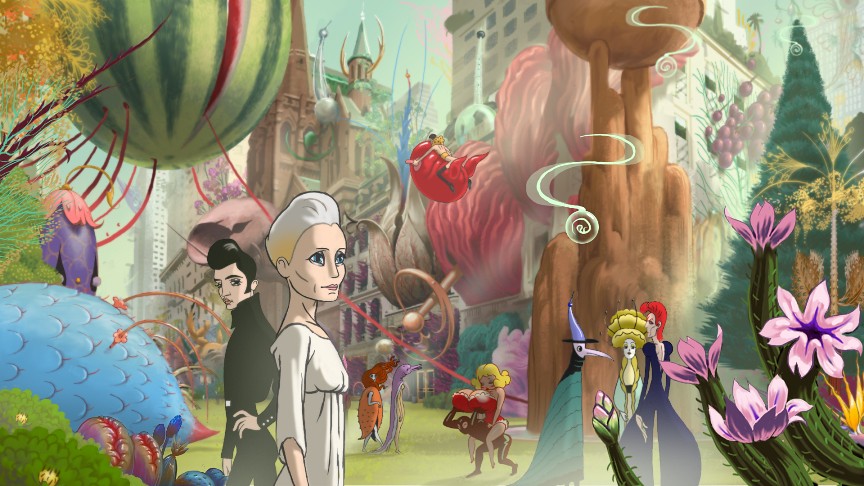I thought this week’s symposium worked really well to allow students to hear a variety of views on how design fiction fits into the world. It also reminded me of something my mother mentioned years ago about the kinds of thinkers we need in government – something I’m starting to make more sense of as I refer to other issues in the Networked Media course.
Some things I really like about what was said:
Elliot explained that design fiction is important for understanding what kind of areas our work may fit into in the future. While this wasn’t a huge light bulb moment for me as I’ve been thinking a lot about design fiction how it implores you to speculate about the future and what we might need. It did, however, lend well to Jasmine’s point about design fiction being applicable to any areas of study – e.g. medicine, architecture.
Design fiction speculates about the requirements and possibilities of a future world and the issues inherent to it. For example, will there be new and more complex health problems we need to address? Is there some kind of technology or service we can create to assist in treating these health issues?
Case in point: I imagine living in the 1970s and speculating about generational and social changes in the next 40 years. Perhaps I can see that the baby boomers in Western society are growing up to be more independent of their parents – they appear to value family togetherness less and globalization is mobilizing people and their immediate families away from their cities of origin.
Also, I can see that advancements in modern medicine are keep people alive longer – i.e. those who’ve endured heart attacks and strokes are revived and treated, and go on to live for years in their own homes, yet with some ailments and health problems that at any moment may need urgent medical attention.
These are the health and social issues of the imagined future that speculative anthropologist me of the 1970s anticipates for the next 40 years.
Considering this, I conceptualise a device that may assist in dealing with these issues. Mobile technology is in its infancy, but I can see that there is potential for small devices that may be able to fit comfortably in one’s pocket. Say we were to develop a pocket-sized device that was programmed to send out an alarm to medical professionals as well as family at the touch of a button. That way, elderly people at risk of having medical emergencies could hold onto this device and send out the alarm in case of a fall, or another person has found them collapsed in the street and so on.
It would be revolutionary in ensuring that people are able to receive urgent and important medical attention, even if they live on their own.
To me, that’s the kind of speculative design fiction that makes sense socially and technologically. It’s about imagining the future, our state as a society, the problems and opportunities we will be faced \with and what products and services we could develop to address them.
I also liked Brian’s point that design fiction is about play, but it is also humble. It’s about what kinds of materials you can use to speculate about the future, without being particularly “obnoxious” with inventive ideas. It’s about practicality because, at the end of the day, that’s what matters. It’s not about having the biggest ideas, it’s about having effective ideas.
The discussions from the Symposium also reminded me of something my mum told me years ago: she had read or watched something on TV that advocated politics as being in need of more creative thinkers – that our politicians needed to come from the fields of architecture and design instead of law and science because they were the problem solvers and innovative thinkers.
The discussions we’ve had surrounding design fiction absolutely supports this idea. I’m not particularly schooled on legal studies and practice, nor architecture, but I think of lawyers as working with the existing state of things – navigating the “system” as is, so accustomed to systems such that there is hardly any room for innovation. Therein lies a culture of Model I thinkers.
This is contrasted to people of design, which Adrian mentioned are becoming more valued by large corporations for their innovation and speculative thinking. Designers are not constrained by the limits of “now” – they think outside the box, imagine a future and an ideal and make it happen. Or rather, they are the experience designers whose innovations are implemented by content producers.
Oksana Faryna of the Kyiv Post kind of lends to this idea in her article “Ukraine needs designers, not just economists and lawyers”. Although her points are quite Europe-specific in mentioning how Ukraine needs to build more beautiful public spaces to counter the grey and cluttered streets of a post-Soviet state, there are some concepts about these public spaces and the attention government should be giving them which work on a multinational scale:
“Effective use of public space determines quality of life. It can aid communication and build communities. It’s what makes Europe European.”
These ideas about experience design opposed to functionality and working within a system lend to the overarching ideals and values of what we study in Networked Media as well as the ideas of Model II learning. We don’t want to be the paper pushers, the ones who smash out the copy or painstakingly work on implementing a design. We want to be the thinkers who create (experience designers) and push for others to implement great ideas that have purpose, meaning and longevity across whatever world we may be faced with in x years time.

